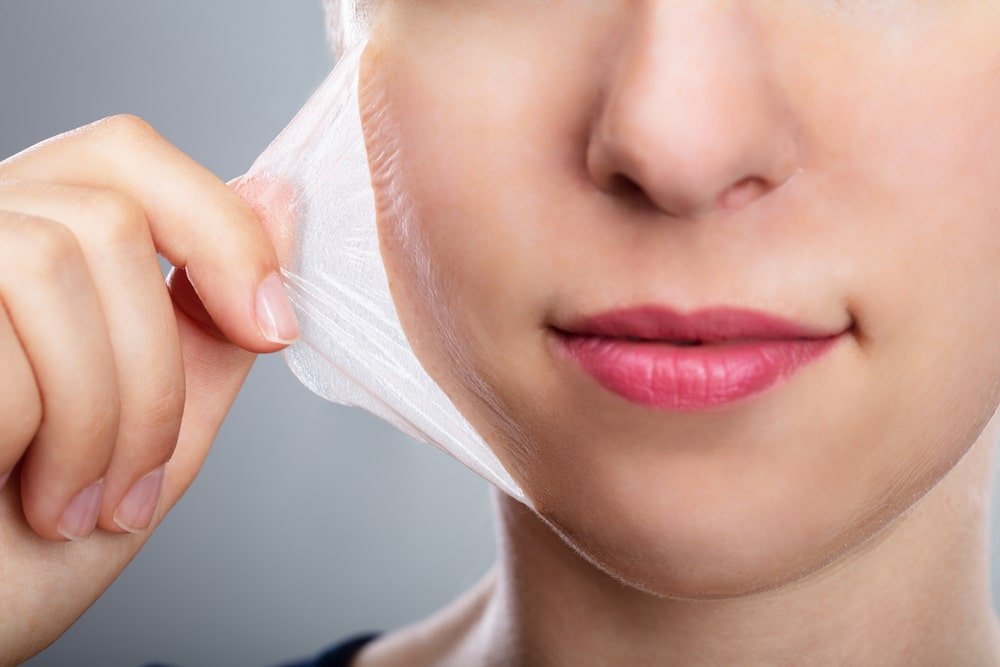
Chemical peeling applications
Superficial chemical peeling
Superficial chemical peels are comparatively gentle as they only remove the top layer of skin (epidermis). Fruit acid peels fall into this category. In particular, they can remove skin impurities and lighten slight pigmentation disorders. However, they cannot get into the dermis, which is the lower layer. By triggering the regeneration of cells in the epidermis, they increase their tolerance to external factors. In addition to cell renewal, it is also effective in treating superficial stains of epidermal origin.
Another superficial peel is the peelings made with salicylic acid (BHA). This substance has a more superficial effect on the epidermis (the top layer of skin). It is mainly preferred in the treatment of acne, black and white spots and secondarily in the treatment of spots.
You can continue your normal everyday life immediately after the treatment.
Medium depth chemical peeling
Medium chemical peels with trichloroacetic acid (TCA): Treatments with trichloroacetic acid may only be used by doctors. With the somewhat stronger TCA peeling, superficial scars and fine wrinkles can be smoothed, skin pigmentation can be lightened and sun-induced cell damage can be reduced. Depending on the condition of the skin, peelings with 15%, 25% and 25% TCA are used.
After the procedure, the face will be reddened. This reddening then darkens to a brown skin color and within 2-3 days the skin begins to peel off. The complete healing process takes about 1 week. To speed up the healing process, the skin should be clean and a moisturizing lotion should be applied after washing.
Deep chemical peeling
The special thing about a phenol deep peeling is the renewal of the elastic and collagen fibers in the depth, which is why the skin receives a significant improvement in its functional properties. This means that renewal and rejuvenation take place in all layers of the skin. Not only fine superficial wrinkles, but also deep wrinkles are almost completely eliminated. The phenol peeling is on a par, if not clearly superior, to a surgical lifting. The special thing about it is: the natural facial expression is retained. A peeling with phenol is the strongest of all chemical peelings and is used above all to treat deep scars and skin folds, pronounced pigment disorders and extreme light damage. The phenol peeling causes a very deep peeling of the skin down to the deeper connective tissue. The healing process after the chemical peeling takes about 1 month, the complete healing of the redness on the face can take up to 3 months.
What needs to be considered before a chemical peel
- Active infections or open wounds
- Active infections with cold sores (herpes)
- Medium or deep peel over the past 3-12 months
- Facial surgery recently
- Abnormal scarring and late healing
- Radiotherapy history
- Fitzpatrick skin type IV, V, VI
- Aspirin allergy to salicylic acid peeling
- Use of anticoagulants
- Cigarette consumption
- Pregnancy / lactation
- Heavy exposure to sun rays
- Previous surgical interventions (at least 6 months waiting period)
Session process
Sessions last an average of 30 to 60 minutes, depending on the size of the area to be treated. Although the number of sessions varies from person to person, case and type of application, the average is:
-
4 – 8 sessions with intervals of 2 – 4 weeks for superficial peeling applications
-
2-4 sessions 2-4 months apart for medium-depth peeling applications
- One session is enough for a deep chemical peel.
What to look out for before peeling
- The hair coloring or a perm should be finished at least 1 week before the peeling.
- The best times for exfoliating are autumn and winter.
What should you watch out for after peeling?
- Direct sunlight should be avoided and the solarium should not be used. This should be used for as long as possible, preferably for 6 months. During this time, high factor sunscreens should be used. One of the preventive measures is to wear hats and glasses in the summer.
- You shouldn’t shower on the first day, the week after only lukewarm shower.
- Applying make-up is allowed after 2-3 days. Lip and eye make-up can be used.
FREQUENTLY ASKED QUESTIONS
Is chemical peeling a painful treatment?
With superficial and medium-depth peeling applications, a mild to moderate burning sensation may appear on the skin during and after the treatment. Anesthetic creams can be used to relieve pain. A deep peeling is a painful skin peeling, so treatment is carried out under local anesthesia. After the Treatment should be taken or used regularly.
Does chemical peel have any side effects?
- The skin may become red and discolored.
- Scarring and pigmentation disorders
- With sensitive skin there is a risk of allergic reactions and burns.
